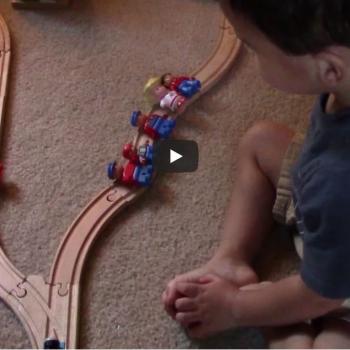Note: in order to continue sharing and discussing the myriad things that come my way in a given day, I’ll be posting these “quick takes.” Ideally they will be short, topical, and have something to invite thoughtful discussion.
Today the topic is technology: a topic I didn’t think too seriously about until around 2004, when I was finishing my BA in Philosophy with my very good friend Ali Tabibnejad. We were both students of Albert Borgmann (in the video below, produced by Ali), who himself is one of the foremost students of Martin Heidegger on the topic of technology and society.
Here is just a short bit of Prof. Borgmann speaking on the topic of technology:
The idea of continuing to question the tradeoffs is highlighted by an article in The New Yorker called OK GLASS, Confessions of a Google Glass Explorer. It begins, tellingly, with a photo of the author looking somewhat odd, touching his new piece of wearable tech and the caption: “I hear that in San Francisco the term “Glassholes” is already current, but in New York I am a conquering hero.” The author had written a novel about a dystopic near future in America. While working on the novel, he writes of his iphone:
The device became a frightening appendage to a life of already sizable anxiety. My phone became a reproving parent that constantly bade me to work harder, a needy lover that beeped and clanged and marimba’d her demands through the left-hand pocket of my jeans, a sadistic life coach constantly reminding me that, whatever I was doing, there were more fascinating things to be done. Returning to the novel five years after its completion, I had the general sense that I had allowed technology to run me over. Now I was more Eunice than Lenny, an occasional rather than a voracious reader, a curator of my life rather than a participant, a man who could walk through a stunning national park while looking up stunning national parks.
While the iphone inspired some of the futuristic details of his novel, the Google GLASS seemed to be bringing them to reality, just 5 years later:
The first drafts of “Super Sad” had a technology called The Eye, which was basically an äppärät inside a contact lens. My editor suggested that it was a little much, and it certainly was in 2008, at a time when even the first iterations of the iPhone seemed like they were beamed back to our world from some glorious future civilization in Cupertino. By 2013, having a miniature screen above my right eye tell me all about “Ashton Kutcher’s new job” feels about right.
And inspiring “fanciful” ideas of what we might see in five (or fewer) years ahead:
Since there are no earbuds to plug into Glass, audio is conveyed through a “bone conduction transducer.” In effect, this means that a tiny speaker vibrates against the bone behind my right ear, replicating sound. The result is eerie, as if someone is whispering directly into a hole bored into your cranium, but also deeply futuristic. You can imagine a time when different parts of our bodies are adapted for different needs. If a bone can hear sound, why can’t my fingertips smell the bacon strips they’re about to grab?
The whole article is worth a read, if not for the content then for the writing itself. After the read, however, I could only wonder if the greatest achievement of technology on the last 10 years has simply been its ability to get us all obsessed with technology. My family got our first computer 1987 (or ’88). I didn’t know anything about it except what it could do – which was a few games and word processing. Then around 1995 we upgraded and leapt into the world wide web. Once again, except for the long wait while the modem dialed up and connected to AOL, I don’t remember thinking too much about the device itself.
It wasn’t until the iPhone that I can recall a device which was no longer a tool, but a sort of end-in-itself. It was a device with which people could walk through a national park staring at, looking up stories about national parks, and talking about how ‘connected’ they felt.
“I can live without that,” I thought, and did so until I returned to England two years ago and, recalling the dread of navigating London and the amazing handiness of googlemaps there, I caved. I bought a second-rate smartphone, one that would get the job done but not dazzle (and thus distract) me from real life.
That Christmas when I visited home (in Montana) I spent some time with Ali and his new iPhone 4. He had downloaded a fancy flight simulator that could detect the slightest movements in your phone, which would be translated into steering the plane. One afternoon we hopped in my car and drove off to a secluded hot springs to soak up the water and just “get away” (as they say).
As we neared our destination, after some good conversation about philosophy, life, and all that stuff, Ali pulled out his phone and booted up the simulator. Everything was going fine for Ali in his imaginary airplane until I had to take a corner on the highway. The G-force apparently caused the plane to bank unexpectedly and Ali had to steady both his physical body and his fake plane at the same time, leading to some awkward contortions and pleas to slow down.
So I did. Quickly.
And in case you didn’t guess what happened next: nosedive, crash, and burn (for the plane, not Ali, who was appropriately belted in to the car).
(Well, so much for short. Maybe next time) Some of my recent-ish writings on tech:












